The lovely foliage and low maintenance make the silver dollar vine (Xerosicyos danguyi) a much sought-for but rare ornamental.
Discover more on silver dollar vine (Xerosicyos danguyi) care, soil, light, watering, fertilizer, repotting, humidity, and temperature requirement.
We will also look at its appearance (size, leaves, stems, flowers) and tell you about its growth rate, hardiness zone, propagation, and much more.
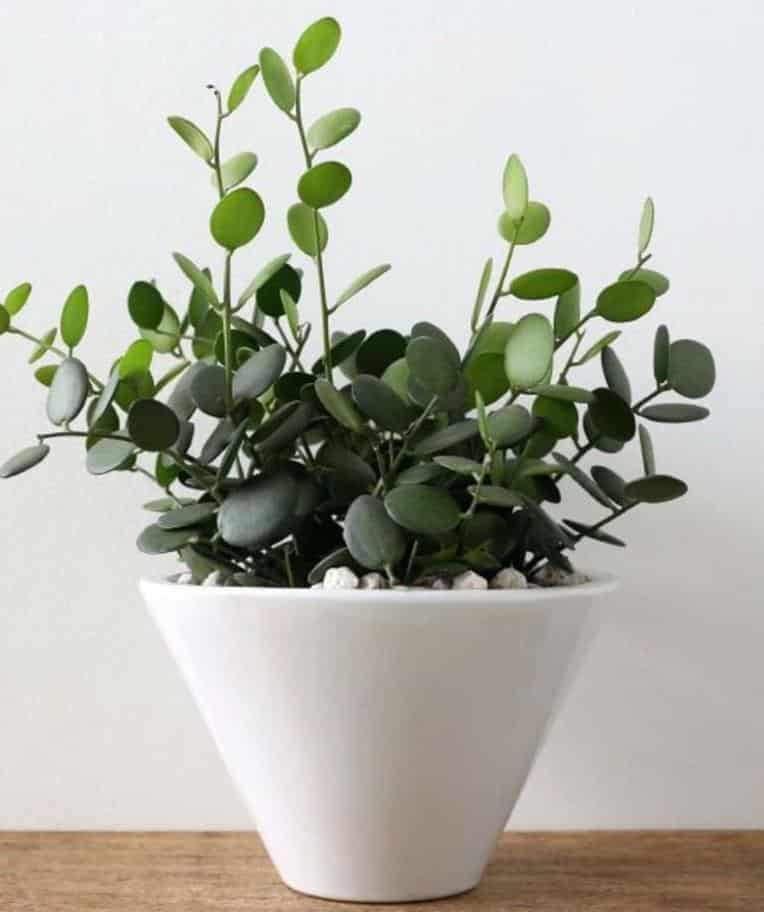
Contents
- Quick overview
- Classification
- Uses
- Identification
- 1. Size
- 2. Leaves
- 3. Stems
- 4. String of coins flowers
- 5. Growth-rate
- Silver dollar vines care and growing conditions
- 1. Temperature and humidity
- 2. Silver dollar vine light requirement
- 3. Soil
- 4. Watering string of coins
- 5. Fertilizer
- 6. Potting and repotting
- How to propagate silver dollar vine
- Xerosicyos danguyi leaf propagation possible?
- String of coin diseases and conditions
- Safety to pets
- Silver dollar vine vs. peperomia hope
- Plants with similar names
- Silver dollar plant
- Crassula arborescens or silver jade plant
- Chinese money plant
Quick overview
| Scientific name | Xerosicyos danguyi |
| Family | Cucurbitaceae (guard family or cucurbits) |
| Common names | Silver dollar vine, dollar vine, penny plant, or silver dollar succulent |
| Native habitat | Madagascar |
| Type | Evergreen liana |
| Growth rate | Moderate |
| Size | 12-16 ft high and 4-6 feet wide |
| Leaves | Almost round blue-green, very-gray leaves, or gray-green leaves |
| Flowers | This plant has a greenish-yellow Inflorescence |
| Stems | Cylindrical, woody, vine-likes stems delicate tendrils |
| Blooming time | Spring/summer |
| Light requirement | Indirect bright light, partial to full sun |
| USDA Zone | 9 to 11 |
| Temperature | Wide range, from 20°F to over 90 °F |
| Humidity | Low to moderate |
| Soil | Well-drained soil, slightly acid with pH of 6.0 – 6.5 such as the succulent or cacti mix |
| Watering | Moderate, soak and dry watering method |
| Propagation | Mainly cuttings, but at times seeds |
| Toxicity | Not toxic to dogs, cats, or humans |
Classification
Silver dollar vine or Xerosicyos danguyi is an evergreen succulent, flowering liana. Lianas long-stemmed, woody vine whose roots grow on ground-level soil and climb on trees or any vertical thing to reach direct sunlight.
It belongs to the family Cucurbitaceae (guard family or cucurbits). Other members of this family are squash, pumpkin, watermelon, cucumber, bitter melon, zucchini, and squash.
X. danguyi is native to Toliara, in the southwestern Atsimo-Andrefana region in Madagascar, where it grows in slightly arid bushland forest or dunes
The eye-catching foliage with almost round succulent leaves has given this plant various common names such as penny plant, dollar vine, string of coins, and silver dollar succulent.
Lastly, did you know that Xerosicyos comes from two Greek words, xero (dry) and sicyos (cucumber), meaning it is a dry cucumber? Now you know.
Uses
Silver dollar vine is a perfect choice for a xeric garden on your balcony, trailed/scrambled around your patio, walls, fences, trellis, or hanging basket.
You can also have them indoors as a hanging basket with or pot plant. However, give them a place to scramble or trail.
Identification
For identification, let us look at Xerosicyos danguyi size and appearance (leaves, stems, and flowers).
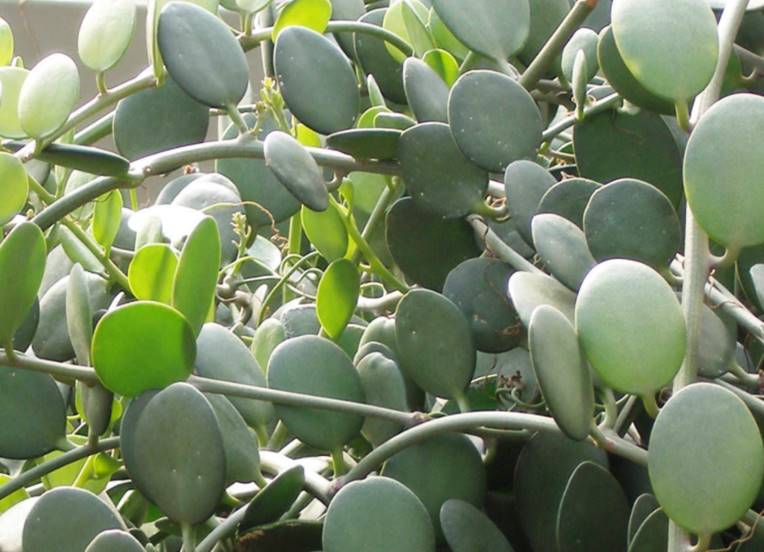
1. Size
The silver dollar vine grows (trails or climbs) up to 12 to 16 feet high or more and maybe about 4 to 6 feet wide. But, it isn’t so aggressive when grown as a houseplant and doesn’t get very tall.
2. Leaves
Silver dollar vine has succulent or fleshy, almost round silvery-gray leaves, blue-green or gray-green leaves. At first, the leaves are pea-green in color but become silvery gray and more succulent or plump as they mature.
These flat leaves measure about 4cm (1.6 inches) long, 3.5 cm (1.4 inches) wide and are about 0.6 cm (0.25 inches) thick. Their petioles are 0.8-1.5 cm long.
Lastly, the leaves grow in an alternative or opposite manner along with their green-colored branches or stems while a new growth has a brownish tip.
3. Stems
Xerosicyos danguyi has a vine-like, thick cylindrical stem with small forked and branched delicate curly tendrils for anchoring to the host.
On young plants, the main stems will grow for up to two feet before growing branches. Also, plants propagated by seeds will have a small tuber or caudex at the base (cuttings don’t have).
Finally, their branches are thin, cylindrical, and grow upright until they start branching too.
4. String of coins flowers
Dollar vine has greenish-yellow, inconspicuous star-like small (about 7mm) flowers that grow in clusters (Inflorescence). They appear in early spring or at times spring/summer. The flower stalks are about 3 cm long.
This plant is dioecious. It has a separate male and female reproductive system, meaning you have either a male or female tree that requires cross-pollination.
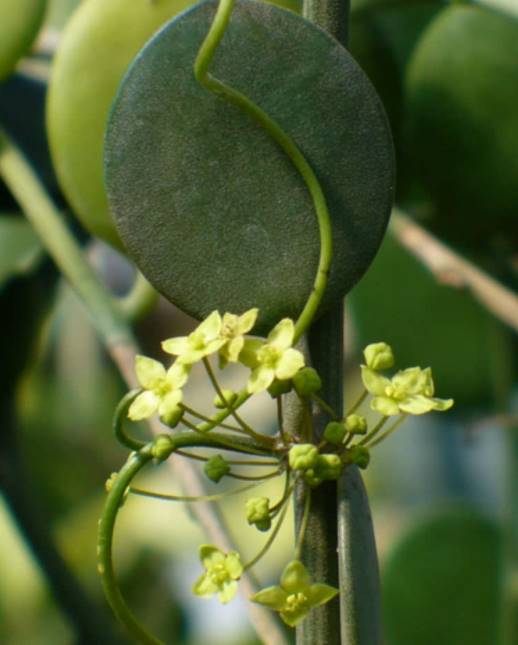
5. Growth-rate
Initially, the silver dollar vine plant grows slowly. However, as it establishes itself, it grows moderately.
Silver dollar vines care and growing conditions
Silver dollar vines are drought-resistant, moderate-growing plants that can withstand temperatures slightly below zero degrees Celsius. They require minimal care, and have average watering requirements, making them suitable for gardening beginners.
The Xerosicyos danguyi USDA hardiness zone is 9 to 11, and you should grow them outdoors because they are sun lovers. However, they can withstand indirect bright light, making them suitable for indoors too.
1. Temperature and humidity
This plant is endemic to Toliara Madagascar, growing in sub-arid (slightly arid) bushland forests.
It requires low to medium humidity but can tolerate even higher levels. When it is humid, reduce watering or mist it when the humidity goes so low.
On the other hand, the ideal temperature for growing Xerosicyos danguyi is 65 to 80 degrees Fahrenheit (18.3 to 26.7°C), i.e., the standard room temperature.
However, they can withstand a wide temperature range, including light frost, i.e., as low as 25 degrees Fahrenheit (-3.9°C) and as high as 104 degrees Fahrenheit (40°C) since they resist heat very well.
Therefore, during extreme winters, move your plant indoors if the temperature falls below 25 degrees Fahrenheit.
2. Silver dollar vine light requirement
Silver dollar vine plants require partial to full direct sun for about 6 to 8 hours a day, just as it is in their natural tropical Madagascar habitat. We encourage you to grow them outside or where they can get partial to full sunlight. Don’t worry about the hot summer weather as they resist heat pretty well.
However, they can still adapt to indirect bright light, meaning you can grow them indoors. Place these ornamentals south-facing window where they can get plentiful indirect sunlight and ensure you don’t overwater them.
3. Soil
The ideal silver dollar vine soil should be well-drained, slightly acid soil with a pH of about 6.0. However, they tolerate neutral to slightly acid soils.
Some of the best soil choices include cactus and succulent potting mixes. But you should avoid mixes with heavy-textured soils. Our favorite brand is Hoffman Organic Cactus and Succulent Soil Mix. It has all the nutrients these plants need, is affordable, and has the ideal pH for these plants.
Also, ensure your pot has drainage holes to let out excess water and reduce the chances of root rot.
4. Watering string of coins
Silver dollar succulents are very drought tolerant, meaning don’t have a high-water requirement and should water them like succulents, i.e., water them moderately.
During the growing season (summer), increase the water, i.e., water it deeply, but reduce the water in winter, ensuring the soil remains relatively dry.
How often to water Xerosicyos danguyi depends on whether it is indoor or outdoor and the season. All you have to do is let the soil dry before watering it again, i.e., use the soak and dry watering method.
Finally, avoid overwatering your dollar vine as it may cause root rot, especially during the non-growing season or if grown indoors.
5. Fertilizer
Silver dollar succulents don’t require a lot of fertilizer. Therefore, feed them only once when they are actively growing (growing season).
We recommend slow-release formulas such as Jobe's Succulent Fertilizer Spikes (NPK 2-8-8). It is affordable, organic (OMRI Registered), lasts all year, and has less odor. Just insert 1, 2, or 4 spikes for a 4, 8, or 12-inch pot.
Alternatively, you can go for Miracle-Gro Succulent Plant Food which you will apply after every two weeks during the growing months only. Use two pumps for pots less than 5 inches and 4 for those more than 6 inches. Mix with water or apply directly to the soil.
6. Potting and repotting
If you received a new plant, allow 3-4 weeks to adjust to the new environment before repotting. Afterward, you will have to repot it biennially (every other year) or when it is rootbound.
Usually, when root bound, you will see roots growing through drainage holes. Also, you can gently slide it out of the pot to see if the roots are curly.
The best time to repot silver dollar vine is spring (growing season), and you need to select a pot that is at least three inches wider and deep enough to accommodate the roots, leaving space for more to grow.
When repotting, use a new cacti/succulent mix, place some in the pot, put your plant in the middle, and add more potting mix.
How to propagate silver dollar vine
Xerosicyos danguyi propagation is by cuttings. It is relatively easy and or less the same as you propagate your other succulents.
Also, to can use seeds. Sow them after the last frost on moist seeding mix and maintain a temperature of about 70°F (21°C). The seeds should germinate after two to three weeks. However, this method is unreliable and will take a very long time to have a grown plant.
The best time, we recommend propagating silver dollar succulents is in the mid-spring, i.e., during the growing time. However, you can also propagate in early summer but avoid autumn or winter.
Here is how to propagate the silver dollar vine:
- Cut a mature branch with a few leaves. Please don’t cut the main stem as it will not grow again, i.e., it will dry off or callus, and instead, a branch will grow from the lower node of the stem.
- Callus it, i.e., let it dry for a few days to callus the area you cut it. The exact duration will depend on weather conditions. If it doesn’t scab over or callus, it will absorb too much water when you water it (may rot) or allow infections.
- After it scabs, grow your Xerosicyos danguyi cuttings in soil and lightly water daily or ensure the potting mix doesn’t dry. However, please don’t overdo it. During propagation, please place it in a bright, shaded area or one with filtered light. A 30% shade cloth or greenhouse will work well.
- Wait for results. It may take two to three weeks before you see new shoots growing, and this can happen with or without roots (they may grow later)
Here is a video to guide you through the propagation process
Xerosicyos danguyi leaf propagation possible?
No, kindly note that Xerosicyos danguyi leaf propagation is not possible. Yes, the leaf may have roots, but it needs a stem with a node, from where a new shoot will start growing.
Therefore, you cannot propagate it with leaves as you do not begonia rex, cactus with pads, jade plant, kalanchoe, peperomia, etc.
String of coin diseases and conditions
This plant isn’t prone to disease. The only thing you need to worry about is root rot if you use the wrong potting mix that doesn’t allow water to drain, you overwater it, or your pot doesn’t have drainage holes.
Safety to pets
According to Tula, “Xerosicyos danguyi are not known to be toxic to humans or pets but should not be ingested.” Therefore, they are not poisonous or toxic to cats, dogs, or even humans.
Silver dollar vine vs. peperomia hope
Peperomia hope is a hybrid cross of Peperomia quadrifolia and Peperomia deppeana belonging to genus Peperomia and the Piperaceae family, the pepper family.
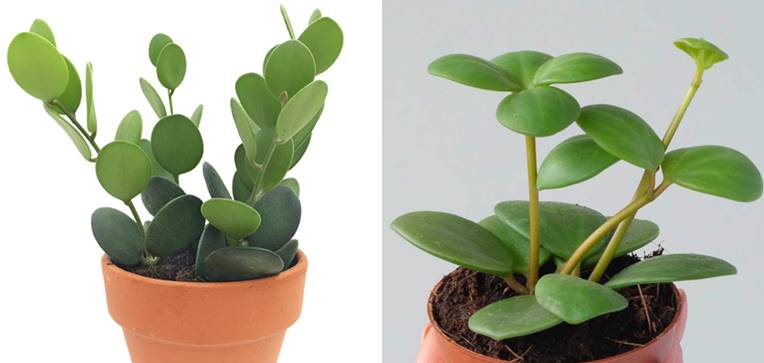
Both have succulent leaves, trailing stems, and their leaves look like in some ways. But, these plants are different, and their growing needs vary.
For instance, the silver dollar vine has silvery-green or gray-green that grow in an alternating manner. On the other hand, peperomia hope has light green to green leaves that grow in whorls or around a stem in a group of four or three leaves.
Also, the silver dollar grows larger, up to 10-16 feet high and 4-6 feet wide, while Peperomia hope is a smaller, compact plant with sizes about 12 inches tall and 8 inches wide.
Plants with similar names
Note that the plants below belong to a different family and are not the same as dollar vine.
Silver dollar plant
Lunaria annua, also known as honest or annual honesty, belongs to Brassicaceae, the cabbage, mustards, or crucifers’ family. It is entirely a different yearly or biennial plant.
The confusion may arise since it has names such as silver dollar coin plant, silver dollar plants, or money plant. Other common names are silver dollars, Chinese money, Chinese coins, coins of Judas, etcetera. These names are due to the silvery, coin-like appearance of silicle membranes (not genuine pods).
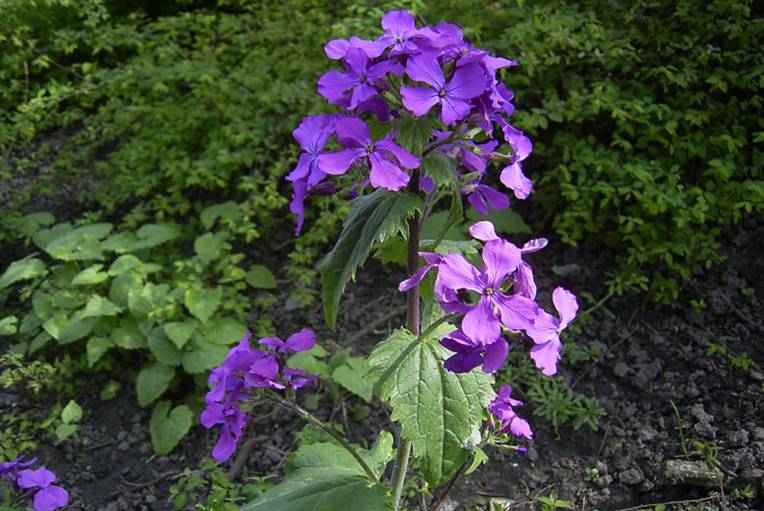

Crassula arborescens or silver jade plant
Kindly don’t confuse the plant with Crassula arborescens, also known as silver dollar plant, Chinese jade, beestebul, money tree, silver jade plant, silver dollar, among other names.
It belongs to the family Crassulaceae and is toxic to dogs and cats for unknown reasons. It causes retching and nausea.

Chinese money plant
Chinese money plant or Pilea peperomioides, also known as missionary plant, coin plant, pass-it-on plant, pancake plant, and UFO plant, belongs to the family Urticaceae or nettle family.






Leave a Reply